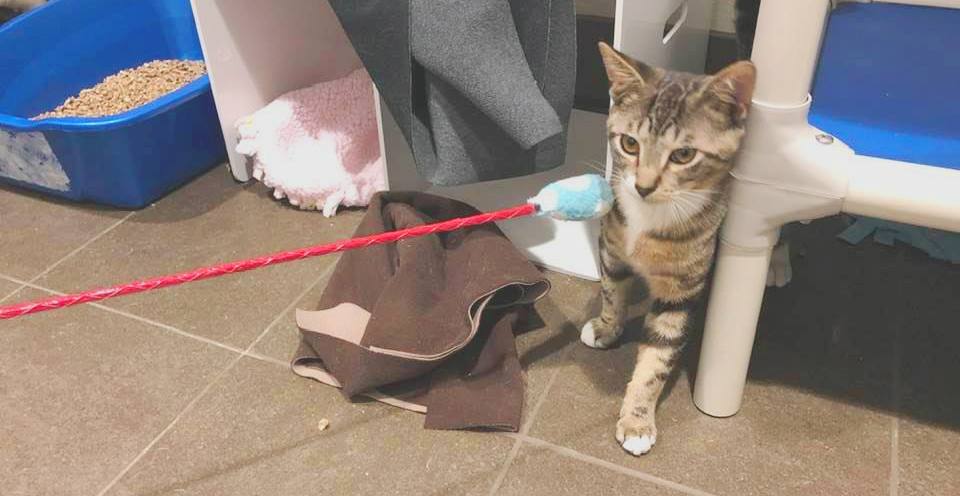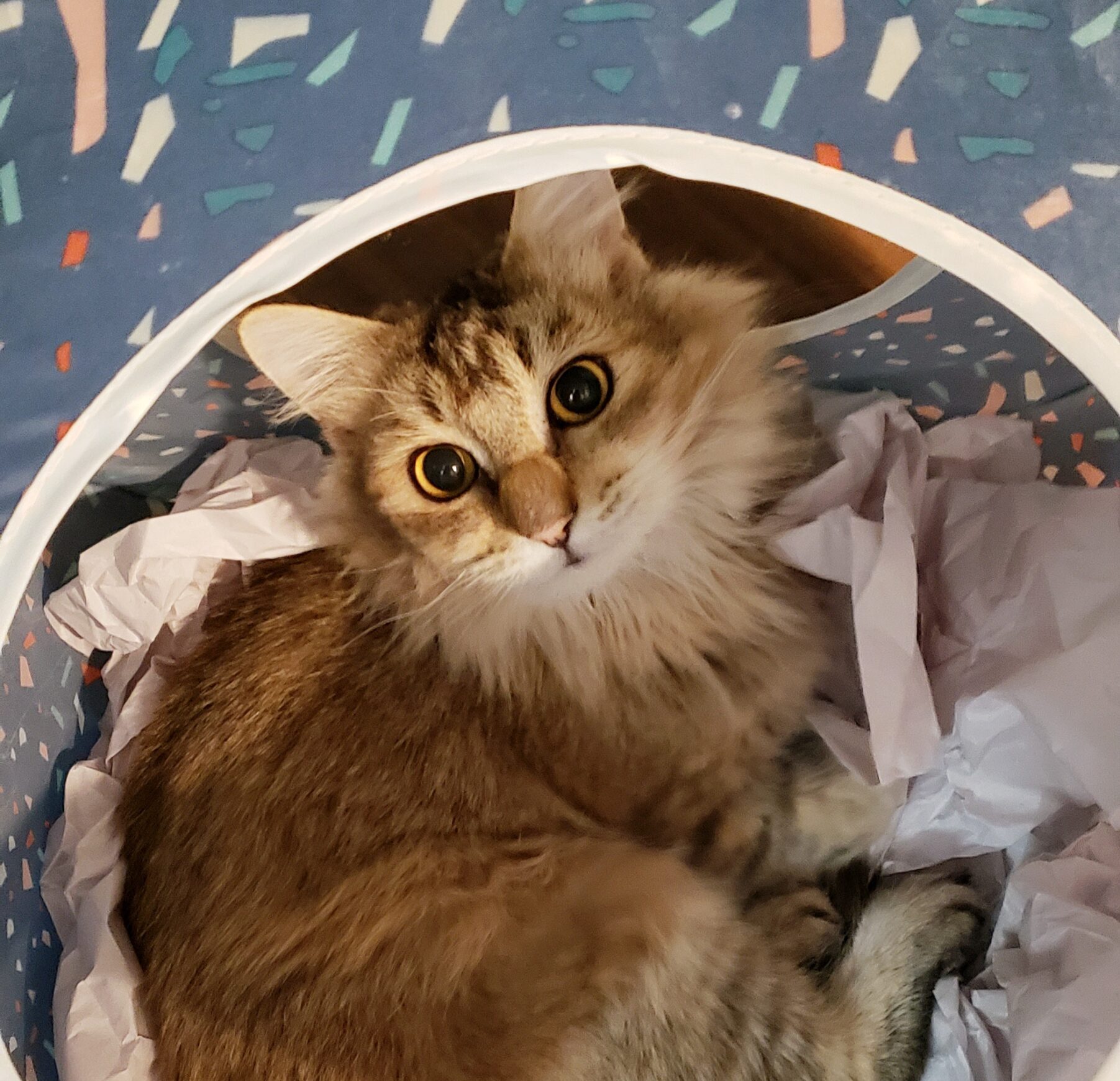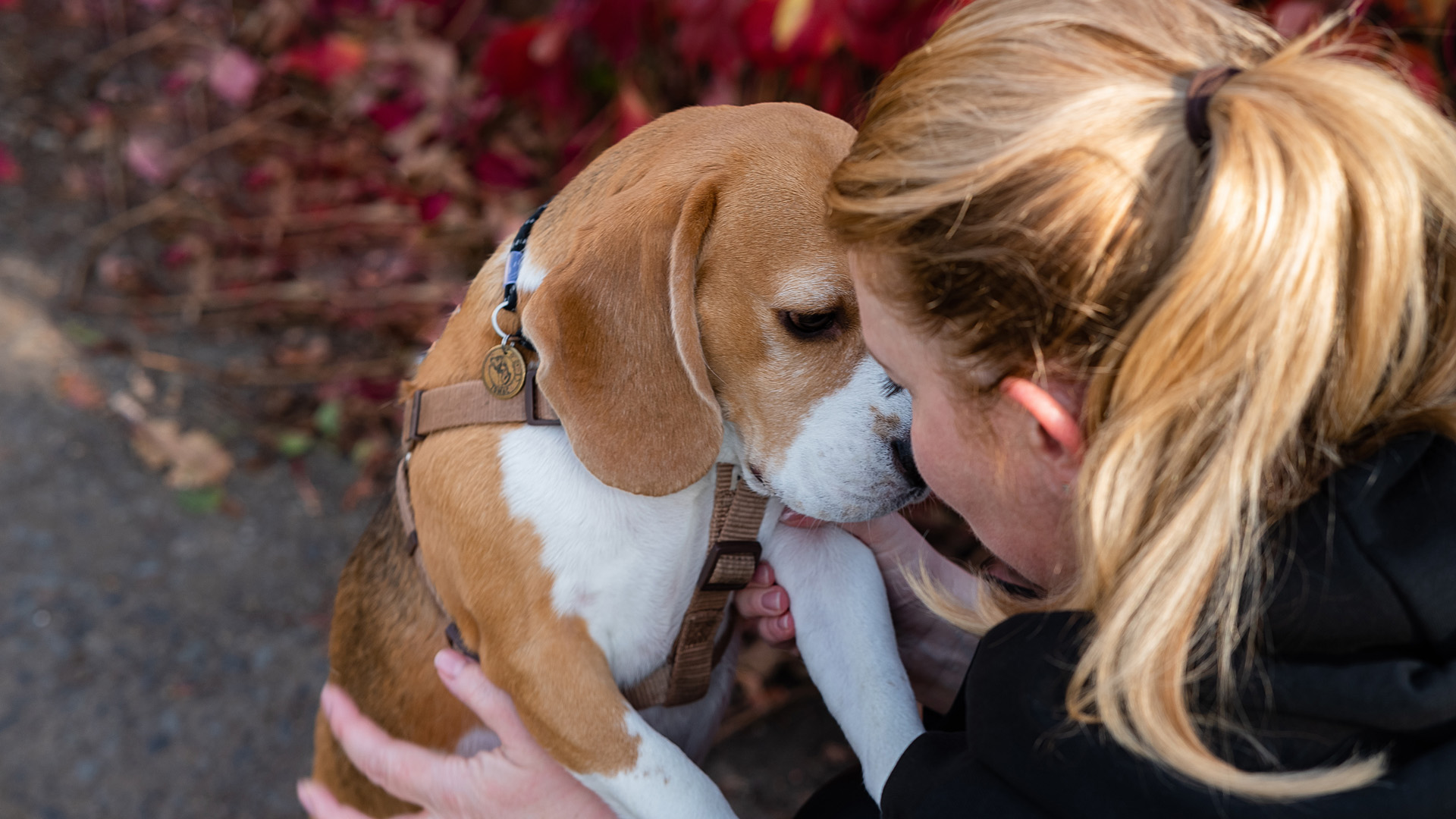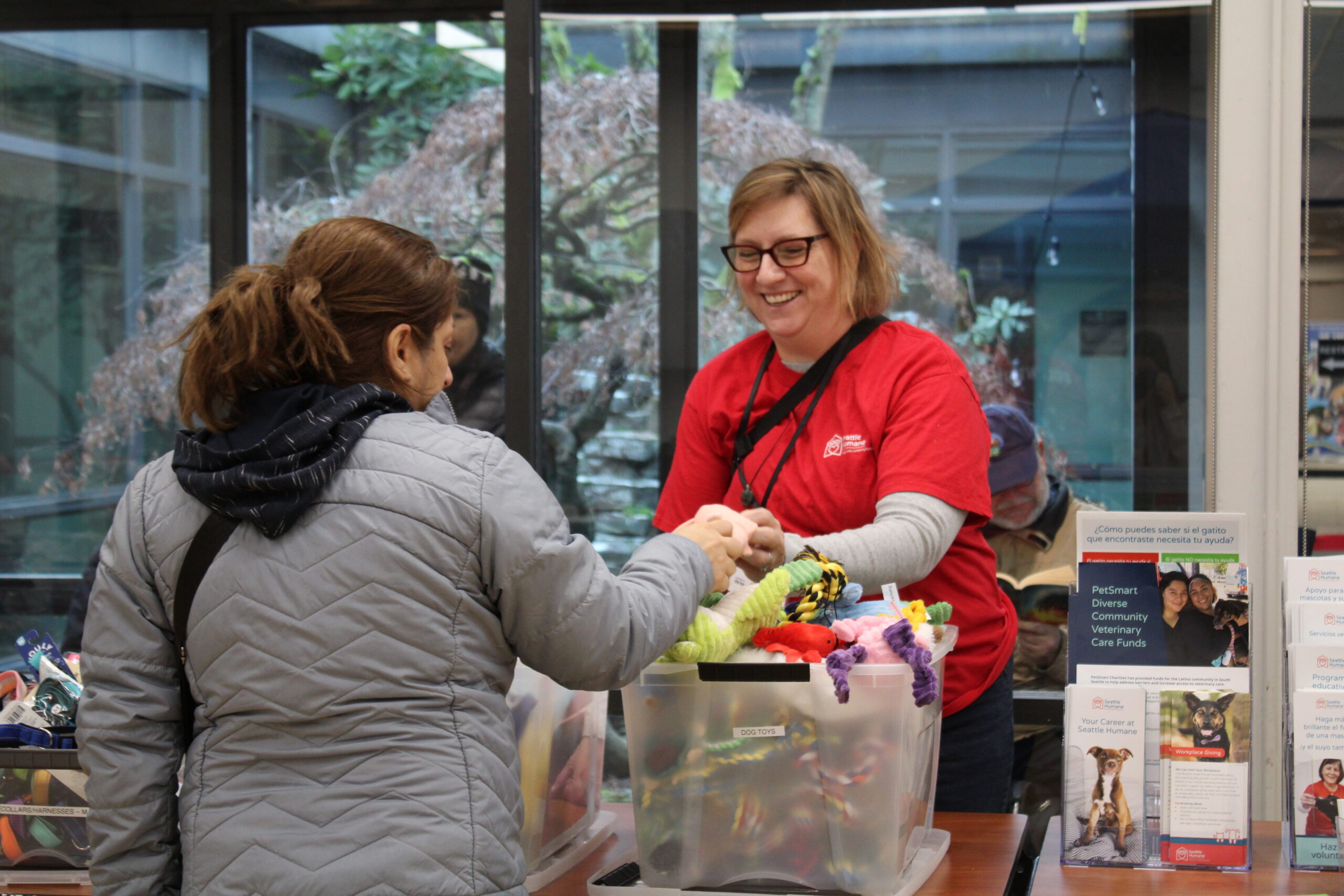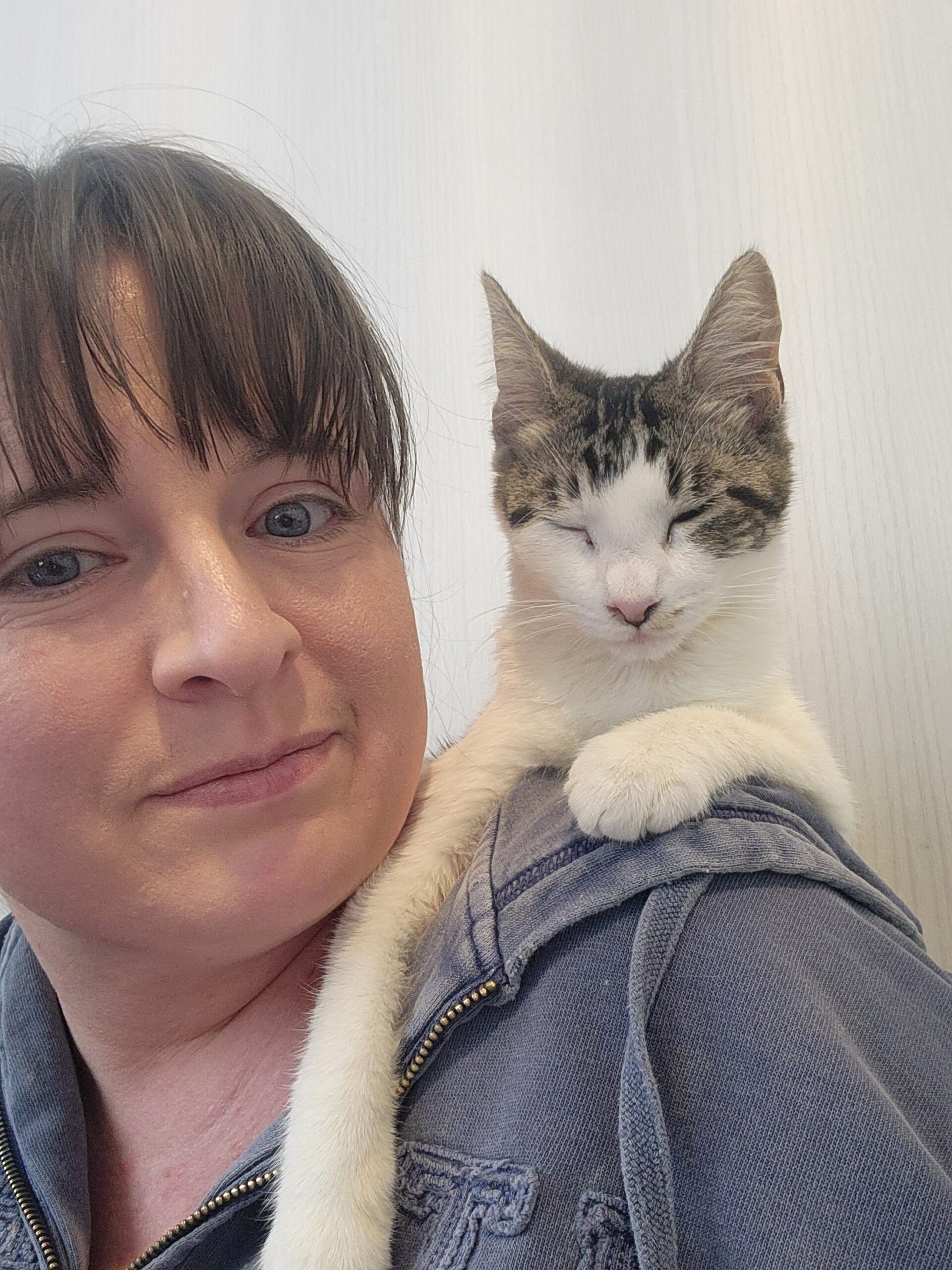At Seattle Humane, we use something called a “touch stick” for new cats and cats who are afraid of human hands. Exactly like it sounds, a touch stick is a stick for touching, in particular for cats who might be afraid of or unused to human hands. It also helps assess the personality of feral and suspected feral cats while keeping our hands safe!
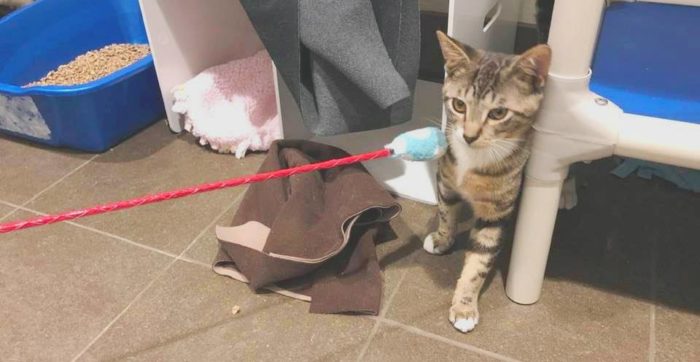
Once upon a time, we used wand toys that had long, fleecy ribbons attached to the end. We would wind the ribbon to touch and pet cats, but the ribbon would end up sliding down the stick after just a few minutes. One intrepid former employee discovered a plushy toy on a stick, and after a bit of experimenting came up with the touch stick as we know it today: a soft pouch of felt, stuffed with felt scraps, secured to the end of a durable, washable plastic handle.
The most common way to use a touch stick is to assess whether or not a cat tolerates being touched. If a cat is hiding in a dark or out of the way spot, it can be difficult to tell if they are scared, aggressive, just want some alone time, or any combination thereof. Reaching in with a hand can startle the cat, and risk a bite or scratch. This can be particularly dangerous when the person attached to the hand can’t see where they are reaching, or has to stretch into an awkward position. Instead, starting with a touch stick gives the cat a more cuddly chance to react to an inanimate object that doesn’t risk bloody fingers. Soft pets to the head or cheeks will show if the cat allows things into their personal space; if they are afraid of a soft toy, they’ll probably swat at a strange hand.
If a cat happens to be a mean kitty, touch sticks are basically useful as a safety tool for moving things like food or blankets, but they can also be used as tools to help cats familiarize themselves with our big, weird, hairless paws.
The touch stick is a simple tool, but it has plenty of clever uses that let Seattle Humane better help and care for cats. And after all the useful uses, it turns out kitties who know touch sticks just like playing with them!
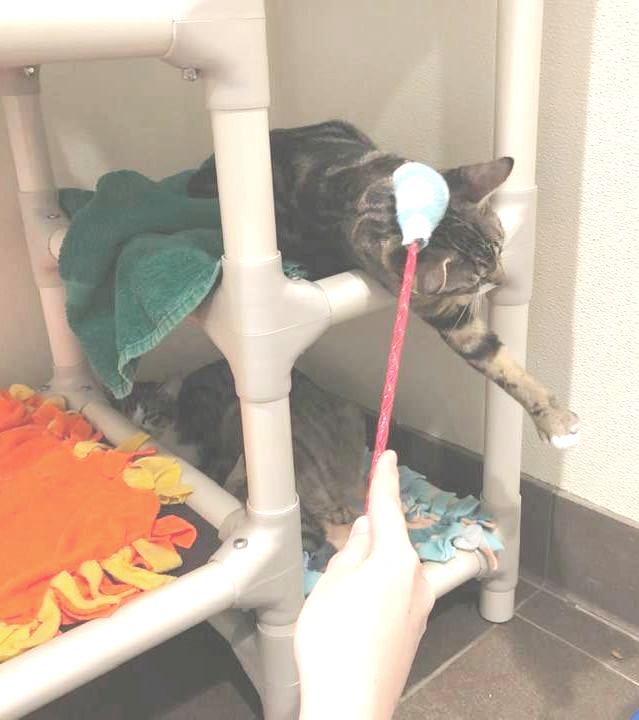
Sometimes cats arrive at the shelter, and we’re told that they’re feral. The touch sticks provide us with a safer way to assess these cats without putting our hands at risk. We look at a few different factors when assessing these cats, one of which is how they respond to touch. We’ll start by seeing how they react to the touch stick and work from there based on how they responded and if we feel it’s safe to touch them.
The full length of the touch stick comes in handy when working with cats who don’t like being touched, or are “hand-shy”. Unfortunately, hand-shy cats might associate human hands with painful grabs or mistreatment, or they might simply be freaked out by our strange, wiggling fingers (just imagine how you might feel if a giant octopus was reaching for you with its tentacles!). Touch sticks allow cats to get used to touches through soft, gentle play. As the cat becomes comfortable with contact, slowly moving a hand up the touch stick will help them become comfortable with proximity, and learn that a hand can be great for pets and massages.
Touch sticks are not just about touch, though; they are also very useful to cats as a way of learning smells! Cats might not be able to track with their noses like dogs, but they still have a good enough sense of smell that they can identify people and other animals by smell, and mark objects with their own scent. They do this by rubbing their cheeks and chins on things, so if you let them play with a touch stick that has your scent, they’ll be quicker to think of you as theirs!
This trick can also be used to introduce cats to other cats or animals. Letting two cats play with the same touch stick will let them get used to each others’ scents before ever having to share a space. Familiarity is a huge part of any kitty’s world, and the more you can preview changes to them, the better they’ll adapt.

